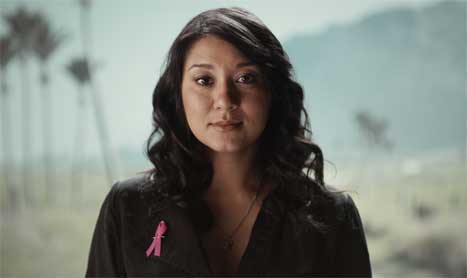 October is Breast Cancer Action Month, and even though it can be a pretty scary subject, it’s important for us ladies to learn about the dangers of breast cancer and how to look out for warning signs.
October is Breast Cancer Action Month, and even though it can be a pretty scary subject, it’s important for us ladies to learn about the dangers of breast cancer and how to look out for warning signs.
There are a number of activities happening this month to raise breast cancer awareness. This includes the Our Women campaign (www.ourwomen.co.nz) which aims to reach every woman in New Zealand with the help of Facebook sharing and a TV commercial fronted by former TV presenter Helena McAlpine, who has terminal breast cancer. As part of this, the iconic Chris Knox Not Given Lightly ballad has been covered by a group of Kiwi celebrities and is available on iTunes.
“Before I die, I want to get a message to every woman in the country that they need to look after themselves and their friends and family,” says McAlpine, who was originally diagnosed in 2008 at age 31. “Watch the video, hear the song and pass it on.”
The stats
In all, 2800 New Zealand women are likely to be diagnosed with breast cancer this year – that’s seven women each day. The majority of them (90-95%) will have no family history of the disease. While over 70% of those will be aged 50-plus, around 370 women will be aged 20-44.
When do I need to start checking?
The New Zealand Breast Cancer Foundation recommends that from 20 years of age, women should become aware of how their breasts look and feel, and start doing self-checks. This means knowing what’s normal for you and knowing what changes to look and feel for. By checking your breasts, you get to know how your normal breasts look and feel. Therefore, you will increase your likelihood of detecting an early breast cancer, if it should develop.
For women aged 40-49, the Foundation recommends a yearly screening mammogram, which is the best method for the early detection of breast cancer in women with no symptoms (and then every two years from age 50 onwards). Their is a National Screening Programme, BreastScreen Aotearoa, which provides free screening mammograms to women aged 45-69 every two years. To enrol on this programme phone: 0800 270 200.
What do I need to check for?
If you notice any of the following changes in your breasts, make an appointment to see your family doctor to get it checked out:
- A new lump or thickening, especially if it is only in one breast.
- A change in breast shape or size.
- A pain in the breast that is unusual.
- A change in the skin of the breast such as puckering or dimpling, reddening or a rash.
- Any change in a nipple, such as a turned-in nipple, crusting ulcer or redness, or a discharge that occurs without squeezing.
Remember that you are looking and feeling for any new or unusual changes. Good places to do this are in front of a mirror and in the shower or bath. The New Zealand Breast Cancer Foundation recommends the following:
In front of a mirror:
(a) Place your hands at your sides and look for any changes
(b) Place your hands on your hips and then press your shoulders and elbows forward – look for changes
(c) Raise your arms and clasp your hands above your head – look for changes
In the shower or bath
With the fingertips of your three middle fingers, use soap to glide over each breast. The way you check your breasts does not matter; there isn’t a right or wrong way. Cover your entire breast tissue, from just below your collarbone to under your breast, and from your mid-chest to your ribs at the side of your chest. Also, with each arm by your side, press your fingers firmly up into each armpit. Breast self checks may make some women feel very anxious, while others will feel reassured; they are – very much – a personal choice.
What would a lump feel like?
Lumps can feel hard and irregular, or they can feel smooth. A suspicious lump is usually hard and irregular in shape – a bit like a raisin. It may be attached to the surrounding tissue or skin, so it doesn’t move around easily. A non-cancerous lump feels more like a grape (smooth edges and more rounded); however, if you find any unusual lumps get them checked by your family doctor without delay.
It’s better to be safe than sorry
If you do find a lump, don’t go into worry overdrive just yet, but definitely don’t put off the doctor visit; make an appointment straight away. Nine out of ten breast lumps are not cancerous (benign), but you don’t want to leave it to chance.
If you would like to support this important cause, keep an eye out for collectors during the Pink Ribbon Street Appeal over Friday 12 October and Saturday 13 October.
For more information, visit www.nzbcf.org.nz.
Photo / New Zealand Breast Cancer Foundation

